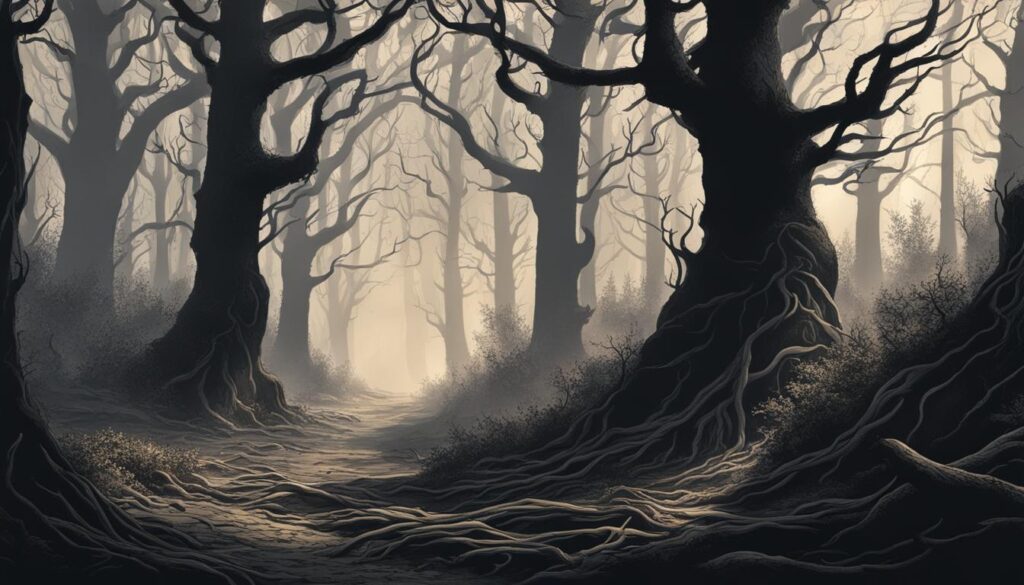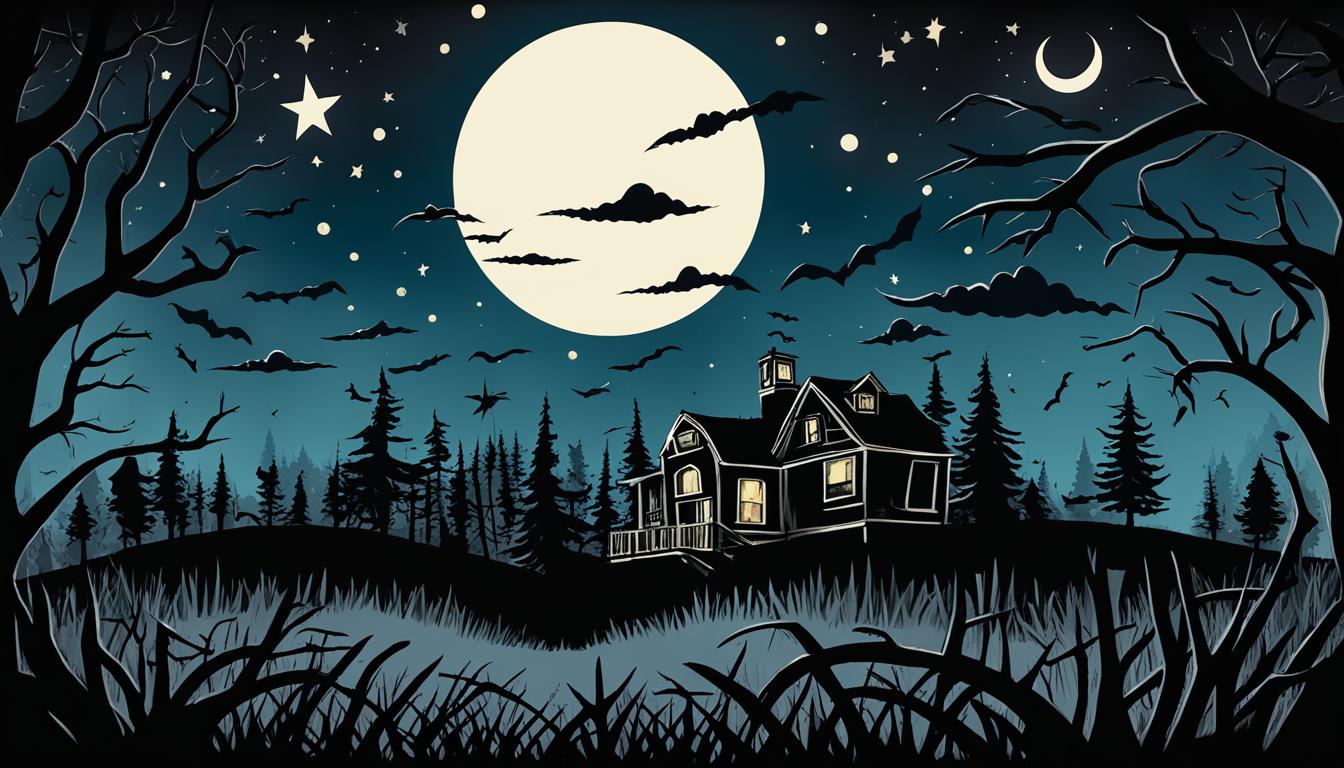If you’re a fan of horror literature, you’ve likely heard of Stephen King. And if you’re a Stephen King fan, you’ve likely read his book, Full Dark, No Stars. This chilling masterpiece is a must-read for anyone who loves suspenseful, heart-stopping storytelling.
In this review, we’ll take a closer look at Full Dark, No Stars in all its grisly glory. From the plot to the characters to the writing style and themes, we’ll delve into what makes this book a standout in the Stephen King canon. So buckle up and get ready for a wild ride.
Overview of Full Dark, No Stars
Stephen King’s book, Full Dark, No Stars, is a bone-chilling collection of four sinister novellas. Each story explores the darkest corners of the human psyche and delves into the consequences of our actions. Set in various locations, including a small town in Maine and a remote homestead, the book delivers a sense of claustrophobia and tension that will leave readers on the edge of their seats.
Premise
The book’s premise questions the validity of justice and the moral ambiguity surrounding its pursuit. Through each novella, King explores the consequences that follow after committing heinous acts and begs the question, “Is justice really that black and white?” The themes permeate deep within each story, leaving readers questioning their perceptions of morality and the price of retribution.
Setting
The settings in Full Dark, No Stars are integral to the tone of the novellas. From the isolated homestead in “1922” to the remote motel in “Big Driver,” each location lends itself to feelings of dread and isolation. King masterfully utilizes setting to create an atmosphere that oozes suspense and hopelessness.
Main Themes
Full Dark, No Stars encompasses classic Stephen King themes, such as the darker aspects of human nature, self-reflection, and the consequences of our choices. The book is an exploration of morality and the human condition that is both thought-provoking and terrifying.
Plot Summary
Full Dark, No Stars is a riveting collection of four novellas that examine the darkest corners of human nature. The book opens with “1922,” which follows the story of Wilfred James, a farmer who murders his wife in cold blood. James soon finds his life spiraling out of control as he struggles to cope with the guilt and paranoia that come with the crime.
The second novella, “Big Driver,” features a successful author named Tess who is brutally assaulted while on a book tour. She seeks revenge on her attackers with the help of a mysterious stranger.
In “Fair Extension,” we meet Dave Streeter, a man dying of cancer who makes a deal with the devil to extend his life in exchange for the misfortune of others.
The final novella, “A Good Marriage,” introduces us to Darcy Anderson, a wife who discovers a horrifying secret about her husband of over 25 years. As she grapples with the knowledge of her husband’s monstrous actions, she is forced to confront the question of how well she truly knows her spouse.
From the chilling opening to the heart-stopping climax, Full Dark, No Stars delivers an unrelenting thrill ride that will leave readers on the edge of their seats.
Character Analysis
Full Dark, No Stars is a masterful display of character development by Stephen King. The main characters of the book are all complex and compelling, each with their own unique motivations and personalities.
The protagonist of “1922” is Wilfred Leland James, a farmer who conspires to murder his wife in order to keep his land. Wilfred is a tragic figure, consumed by guilt and slowly descending into madness.
In “Big Driver,” we follow mystery novelist Tess as she seeks revenge against her rapist. Tess is a fiercely independent woman, using her intelligence and resourcefulness to survive.
In “Fair Extension,” we meet Dave Streeter, a man diagnosed with terminal cancer who makes a deal with the devil to prolong his life. Dave is a sympathetic character whose flaws drive the story.
The final story, “A Good Marriage,” centers around Darcy Anderson, a woman who discovers her husband’s secret life as a serial killer. Darcy is a brave and resourceful woman, who must grapple with the dilemma of protecting her family versus seeking justice.
Each character is fully realized and has a significant impact on the overall narrative of the book. King’s ability to create multi-dimensional characters is one of the strengths that sets him apart as a writer in the horror genre.
Themes Explored
Full Dark, No Stars delves into a myriad of thought-provoking themes, many of which are recurrent in Stephen King’s works. The book explores human nature’s darkest corners, where greed, violence, and manipulation reside. King’s portrayal of abusive relationships, sexual assault, and the cyclical nature of violence creates a chilling tale that forces readers to confront societal issues that often go unnoticed.
The book has a strong moral ambiguity, raising questions about right and wrong, justice, and karma, creating an unsettling atmosphere and leaving readers to contemplate the answers for themselves. King presents a sobering view of the world in which even the best-intentioned people can find themselves capable of horrendous acts under certain circumstances.

The Human Condition
At its core, Full Dark, No Stars is a reflection on the human condition, and the intrinsic flaws that define our existence. It explores the darkest aspects of humanity and argues that humans can be the real monsters. Thus, the book’s themes remain relevant over time and provide readers with a profound sense of introspection.
Writing Style and Atmosphere
Stephen King’s writing style is known for its unique blend of horror, suspense, and vivid imagery that transports readers deep into the story. Full Dark, No Stars is no exception, showcasing King’s masterful ability to create a haunting and immersive atmosphere that grips readers from the first page to the last.
The book’s setting in rural Maine adds to the eerie ambiance, as the isolated and bleak landscapes become as much of a character as the people themselves. Through his descriptive prose, King brings to life the oppressive and suffocating environment that envelops the characters, adding to the tension and sense of looming danger.
King’s Writing Techniques
King’s writing techniques are used to great effect in Full Dark, No Stars. From his use of foreshadowing and symbolism to his skillful pacing and manipulation of narrative perspective, every aspect of the story is carefully crafted to maximize the emotional impact on the reader.
One trademark of King’s writing is his ability to write flawed and complex characters that remain relatable and engaging. In Full Dark, No Stars, each character is painted with compelling nuances and motivations, making the despicable acts they commit all the more shocking.
The Enduring Allure of Full Dark, No Stars
The writing style and atmosphere of Full Dark, No Stars are a testament to the enduring allure of Stephen King’s storytelling. The book’s themes of moral ambiguity, the consequences of violence, and the price of survival transcend the horror genre and resonate with readers on a universal level.
Reading Full Dark, No Stars is an unforgettable experience that will linger long after the final page is turned, and the impact of King’s writing style will remain with readers for years to come.
Critical Reception
Full Dark, No Stars has received a generally positive critical reception from both literary critics and readers alike. Many have praised Stephen King’s masterful storytelling and ability to create a gripping sense of atmosphere and suspense.
According to Publishers Weekly, “King’s latest collection of four novellas shows once again why he is the master of the form.” The Los Angeles Times also praised the book, stating that it “might be some of King’s best work yet.”
However, some critics have noted that the book may not be for everyone, with its dark and disturbing subject matter. Nevertheless, Full Dark, No Stars remains a favorite among horror and thriller enthusiasts.
Impact and Legacy
The impact of Full Dark, No Stars in the horror literature genre cannot be overstated. Stephen King’s profound talent for crafting intricate plots and fleshing out fully-realized characters is on full display in this novel. Many readers have cited Full Dark, No Stars as a favorite among his extensive body of work.
Its influence can be seen in other horror literature works, and its themes and motifs endure in popular culture. Full Dark, No Stars has secured a place in Stephen King’s legacy as a master of the horror genre.
The Impact in the Literary Landscape
From its publication, Full Dark, No Stars became a staple in horror literature. The novel garnered critical acclaim and high praise from readers and reviewers alike. Many consider it to be one of the most harrowing and thought-provoking works ever written by Stephen King.
The Influence on the Horror Genre
The impact of Full Dark, No Stars can be felt in the work of other horror authors. Fans of the novel frequently recommend it to others and cite it as an essential read for seasoned horror enthusiasts and newcomers alike. Its influence can be seen across popular culture, from film adaptations to popular horror podcasts.
Overall, Full Dark, No Stars has cemented its place in the horror literature genre and in Stephen King’s legacy as a titan of horror storytelling.
Conclusion
Full Dark, No Stars is a chilling and masterful addition to Stephen King’s impressive body of work. Through its intense plot and memorable characters, the book explores themes of morality, the consequences of one’s actions, and the darkness that resides within us all.
King’s writing style creates an atmospheric and palpable sense of dread, making Full Dark, No Stars a must-read for horror enthusiasts. Its impact on the genre is evident, and it remains a favorite among fans of Stephen King’s unique brand of storytelling.
This book is not for the faint of heart, but for those brave enough to delve into its pages, it offers a terrifying and unforgettable reading experience.



